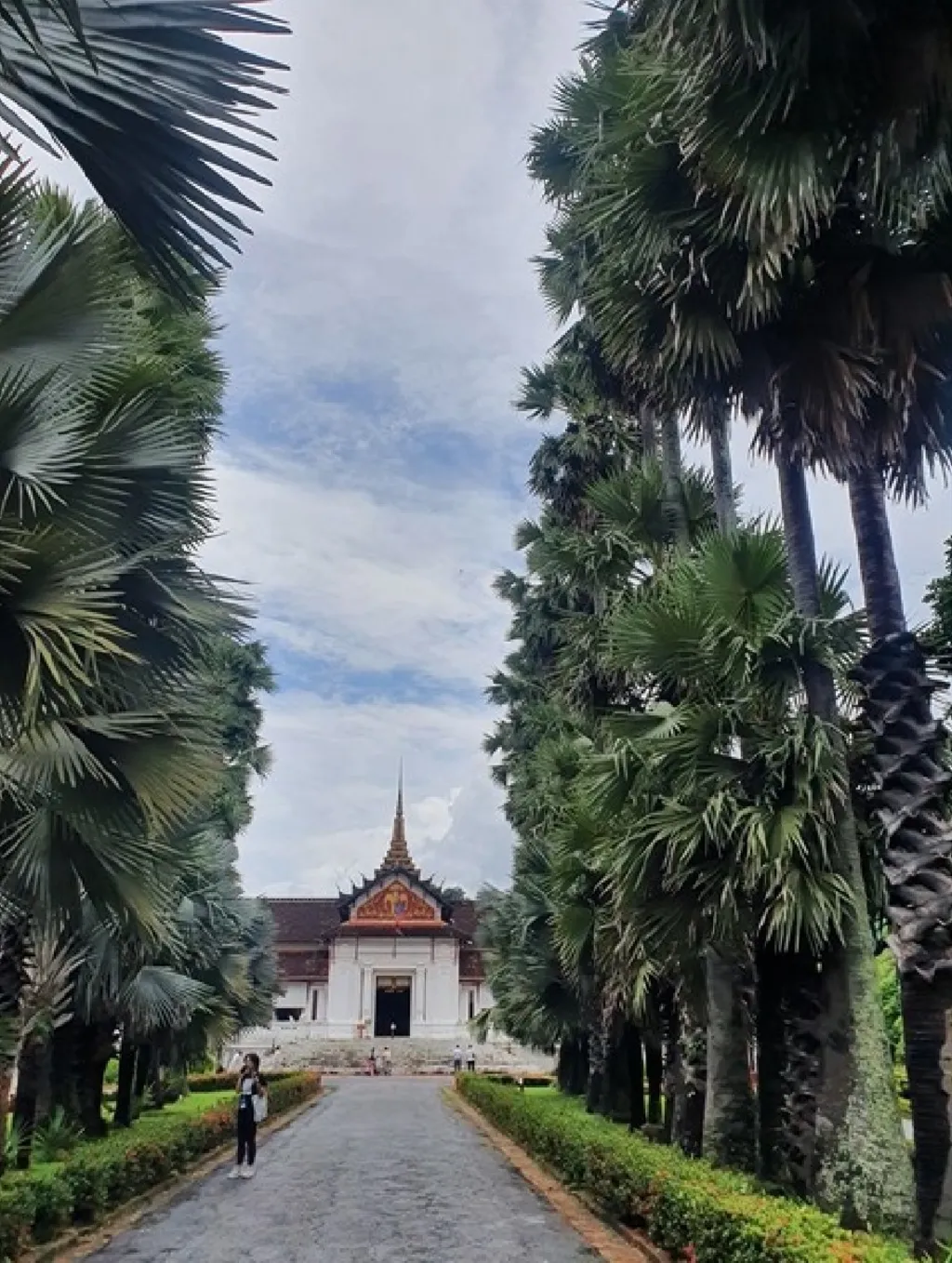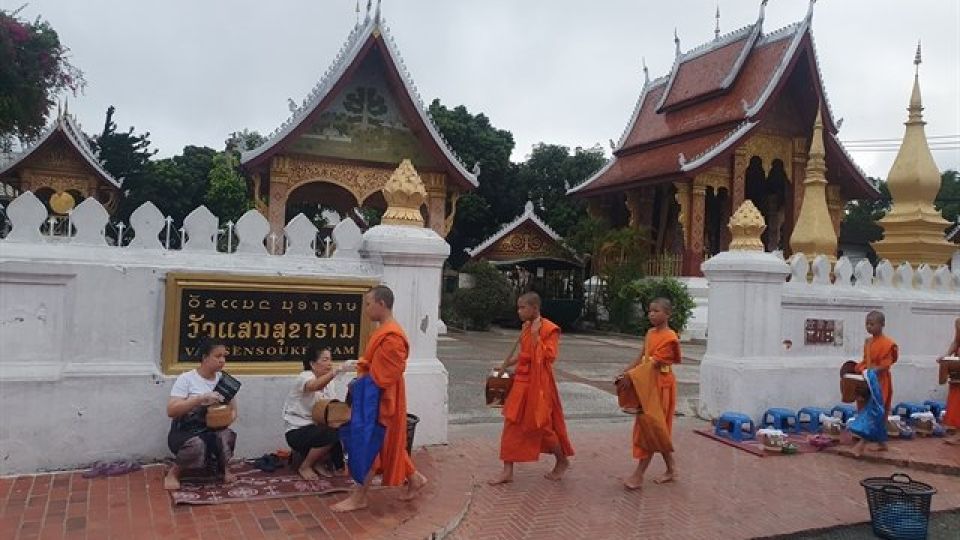September 4, 2024
VIENTIANE – Days after my first visit to the historic town of Luang Prabang, the memories and emotions of my time there continue to linger vividly in my mind.
I find myself still overwhelmed by a sense of nostalgic longing for the serene beauty and timeless allure of this idyllic northern Lao destination.
Luang Prabang, located about 300km from the capital city of Vientiane, is only about 1.5 km long and 500 metres wide and has a population of 56,000. The former royal capital of Laos, from the 13th to the 16th centuries, was recognised as a UNESCO World Heritage Site in 1995.
Dubbed the “Emerald jewel in the tropical forest”, Luang Prabang was ranked among the top 50 most visited destinations in the world in 2023 by India’s Travel Times. It was also included in the list of the 50 most beautiful small towns in the world in 2023 by Condé Nast Traveler and named the ideal destination in Southeast Asia to experience Buddhist culture in the summer of 2024 by Lonely Planet.
True to these accolades, the ancient town impresses every visitor with its peaceful natural surroundings and unique, remarkably well-preserved townscape. I was instantly instilled with a sense of calmness and somehow “relieved” from the bustling modern life during my time there.
My first stop in exploring this beautiful small town was Wat Xienthong, one of the most ancient and beautiful temples in Luang Prabang. Wat Xienthong, which means “Temple of the Golden City” in the Lao language, was constructed in the 1560s during the reign of King Setthathirat—a golden era of the Lan Xang Kingdom, also known as the Kingdom of a Million Elephants.
Surrounding the temple are numerous structures, both large and small, all built in a unified architectural style that strongly reflects the ancient heritage of Luang Prabang. The most prominent feature is the main Assembly Hall, constructed on a raised foundation with many steps leading up to it. Viewed from a distance, the roof of the main hall has three distinct curved layers with high, majestic peaks.

Wat Xienthong Temple is one of the most ancient and beautiful temples in Luang Prabang. PHOTO: VIET NAM NEWS
Inside the main Assembly Hall, the central focus is a statue of Buddha Shakyamuni, surrounded by smaller Buddha statues in various poses. All columns are elaborately decorated with intricate golden floral designs and patterns. Exquisitely carved bas-reliefs and paintings adorn the walls, both inside and outside the main hall. They depict the daily life of the Lao people from the 16th century, as well as scenes and motifs inspired by Buddhist iconography and scriptures.
According to Hongphan Sisomphone, the official in charge of ceremonies at Wat Xienthong, the temple sees a large number of local devotees coming to worship daily, in addition to many tourists. It is often the venue for major festivals or important events in Luang Prabang.
A few steps away is the Royal Palace Museum, built in 1904. The building is a harmonious blend of French architectural style and traditional Lao features, nestled within a vast green garden.

Royal Palace Museum is a harmonious blend of French architectural style and traditional Lao features, nestled within a vast green garden. PHOTO: VIET NAM NEWS
Visitors can see royal artefacts, statues, and paintings from centuries ago, including a 2,000-year-old Buddha statue created in the 1st century in Sri Lanka and later gifted to the King of Laos. The exhibits at the Royal Palace Museum help visitors understand the past royal life and, through that, gain deeper insights into the unique characteristics of Lao culture.
Luang Prabang has over 40 temples from various eras, each possessing distinctive features. The image of monks in saffron robes performing the Tak Bat (or Alms Giving) ritual daily has become a familiar sight in this small town.
Every morning at dawn, they walk in long processions through the streets to bestow blessings and receive offerings of food from the faithful. Buddhists view this ritual as a way to express reverence, direct their intentions towards good deeds, and pray for peace and wellbeing for themselves and their families.
It is a truly blessed experience to wake up early in the morning, take a leisurely walk along the small roads of the town while inhaling the fresh air from the Mekong River.
Tourists can also join the Tak Bat ritual by purchasing a small bamboo basket of sticky rice from nearby vendors and following locals to offer it to the monks, which certainly leaves a peaceful feeling.
Alongside the ancient temples, there are also two-storey wooden houses inspired by French architecture, with small balconies in the front that create a cosy, welcoming atmosphere. Time has left its mark on this royal capital through the various changes and ups and downs of history; however, it has still retained its unique structures, serenity, and slow pace of life.
In contrast to the serene atmosphere during the day, the rhythm of life in Luang Prabang becomes more lively and vibrant at night. The lights from the restaurants, bars, and hotels along the Mekong River start to shine brightly. Many cultural activities, such as traditional Lao dance performances and live music, are also organised during this time.
Another exciting experience during my stay in Luang Prabang was visiting the night market, a “shopping paradise” with countless stalls selling souvenirs, handicrafts, jewellery, and delicious street food. However, it is advisable to visit before 10pm, as all vendors pack up their goods and shops close by that time, allowing the inherent serenity of the ancient town to return.

A street stall selling local handicraft products in Luang Prabang night market. PHOTO: VIET NAM NEWS
The high-speed Lao-China train route from Vientiane to Luang Prabang has now reduced the travel time to just two hours, significantly shortening the journey compared to the previous 8-10 hours by coach.
As a result, more and more visitors are choosing Luang Prabang as a stopover destination, boosting tourism in the “Land of the Champasak Flower” and in Luang Prabang specifically.
“The ancient capital of Luang Prabang is serene, with not too many vehicles on the streets, allowing me to fully enjoy moments of relaxation after the busy days of work,” said Kent Bladdy, an American tourist.
“Besides the captivating natural scenery and the cultural-historical sites, we were also enthralled by Lao cuisine, with its robust flavours from padaek (fermented fish sauce), grilled meat dishes, and aromatic seafood seasoned with ginger, galangal, lemongrass, and chilli. The prices are quite affordable, and the local people are very friendly,” he added.


